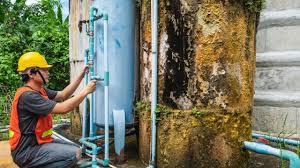Stories you may like
Greenhouse Technician
A greenhouse technician helps grow and care for plants inside a greenhouse. They make sure the plants get the right amount of water, light, and nutrients to stay healthy. This can include flowers, vegetables, herbs, or young trees. Greenhouse technicians often use tools and equipment like hoses, sprayers, and climate controls to manage the growing environment.
They also check plants for pests or diseases and may apply treatments if needed. Some greenhouse technicians help with planting seeds, transplanting young plants, and preparing plants for sale or delivery. Their work supports gardeners, farmers, researchers, or companies that produce plants for food, landscaping, or scientific study.
Duties and Responsibilities
The duties and responsibilities of a greenhouse technician can vary depending on the specific greenhouse and its operations. However, here are some common tasks and responsibilities associated with this role:
- Plant Care: Water, fertilize, prune, and sometimes stake plants to support healthy growth. Technicians must understand the specific needs of different plant species and adjust care routines accordingly.
- Climate Control: Monitor and adjust systems that regulate temperature, humidity, lighting, and airflow inside the greenhouse. This helps maintain ideal growing conditions year-round, regardless of the weather outside.
- Pest and Disease Management: Inspect plants regularly for signs of pests, mold, or disease. Apply treatments such as insecticidal soap, biological controls, or chemical pesticides, following safety and environmental guidelines.
- Planting and Transplanting: Sow seeds, move seedlings to larger containers, and prepare plants for sale or outdoor planting. This also includes handling soil mixtures, pots, and planting tools with care.
- Recordkeeping: Maintain detailed logs of plant growth, watering schedules, fertilizer use, and any problems observed. These records help track performance and support better decision-making over time.
- Equipment Maintenance: Clean and service tools, irrigation lines, misting systems, and environmental control devices to prevent malfunctions and keep operations running smoothly.
- Inventory and Organization: Monitor supplies like soil, pots, seeds, and fertilizers. Properly label plants and organize greenhouse space to improve workflow, reduce waste, and ensure safety.
Workplace of a Greenhouse Technician
The workplace of a greenhouse technician is usually inside a greenhouse, which is a structure made of glass or plastic that protects plants while letting in sunlight. These spaces are designed to create a controlled environment where temperature, humidity, and light can be adjusted to help plants grow. Greenhouse technicians spend most of their time working around plants, soil, and equipment in this enclosed space.
Because greenhouses are climate-controlled, the temperature inside can be warm and humid, even during colder months. Technicians often stand, bend, and move around a lot while watering plants, checking for pests, or transplanting seedlings. The work can be physically active and sometimes messy, involving dirt, water, and fertilizer. Wearing gloves and proper clothing is usually necessary.
Greenhouse technicians may work alone or as part of a team, depending on the size of the greenhouse and the type of work being done. In research settings, they may also spend some time in labs or offices recording data and monitoring plant growth. Good organization, attention to detail, and time management are important in this job, as many tasks need to be done on a regular schedule to keep the plants healthy.
How to become a Greenhouse Technician
To become a greenhouse technician, you can follow these general steps:
- Education: Obtain a high school diploma or equivalent. While not always a strict requirement, it serves as the foundation for further education and demonstrates basic academic proficiency.
- Pursue Relevant Education or Training: Consider pursuing formal education or training in horticulture, plant sciences, botany, greenhouse management, or a related field. You can explore options such as associate degree programs, vocational training, or certificate programs offered by community colleges, technical schools, or agricultural institutions. These programs provide knowledge and hands-on experience in plant care, greenhouse operations, and related subjects.
- Gain Practical Experience: Seek opportunities to gain practical experience in greenhouse settings. Look for internships, apprenticeships, or entry-level positions in nurseries, garden centers, or greenhouses. This hands-on experience will help you develop essential skills in plant care, irrigation, propagation, pest control, and greenhouse operations.
- Obtain Relevant Certifications (Optional): While not always required, obtaining certifications related to greenhouse management or horticulture can enhance your qualifications and demonstrate your expertise (see below).
- Continue Learning and Professional Development: Stay updated on the latest advancements and techniques in greenhouse management and horticulture. Attend workshops, conferences, and seminars related to the field to expand your knowledge and network with industry professionals. Join relevant professional associations and engage in ongoing learning to further enhance your skills and expertise.
- Job Search and Career Advancement: Look for job openings in nurseries, greenhouse operations, or agricultural institutions. You can search online job portals, industry-specific websites, or network with professionals in the field. Starting as an entry-level greenhouse technician, you can gradually gain experience and expertise to advance to roles with more responsibilities or specialization.
Key skills needed for a Greenhouse Technician:
1. Plant Care & Cultivation Skills
- Knowledge of plant biology, horticulture, and botany
- Propagation techniques (seeds, cuttings, grafting)
- Watering, fertilizing, pruning, and transplanting
- Pest, disease, and weed identification and control
- Soil, compost, and hydroponic system management
2. Technical & Equipment Skills
- Operation of greenhouse systems (heating, cooling, irrigation, ventilation, lighting)
- Maintenance and troubleshooting of automated equipment
- Understanding of hydroponics, aquaponics, and vertical farming systems
- Use of monitoring tools for humidity, temperature, and soil health
3. Environmental & Sustainability Knowledge
- Awareness of sustainable farming practices
- Knowledge of integrated pest management (IPM)
- Familiarity with water conservation and nutrient recycling methods
- Adherence to safety and environmental regulations
4. Analytical & Monitoring Skills
- Ability to monitor crop growth and identify abnormalities
- Record-keeping of plant health, yields, and treatments
- Use of sensors, data logs, and software for greenhouse management
- Quality control to ensure healthy produce and plants
5. Physical & Practical Skills
- Manual dexterity for handling delicate plants
- Stamina for physically demanding tasks (lifting, standing, outdoor work)
- Safe handling of chemicals, tools, and machinery
- Attention to detail in daily plant care routines
6. Soft Skills
- Problem-solving for unexpected plant or system issues
- Time management to handle seasonal and daily care tasks
- Teamwork and communication with horticulturists, researchers, or farm managers
- Adaptability to changing weather and market conditions
Salary of a Greenhouse Technician
India
- Entry-level: ₹2.5 – ₹4 lakh per year (₹20,000 – ₹35,000/month)
- Mid-level (3–5 years): ₹4 – ₹6.5 lakh per year
- Experienced / Specialized (hydroponics, vertical farming, agritech setups)**: ₹7 – ₹10 lakh+ per year
- In agribusiness startups or research institutes, pay may be higher, especially for technicians trained in advanced greenhouse automation.
Global (approximate ranges)
- United States: $30,000 – $45,000 annually (entry-level); up to $55,000+ with experience
- Canada: CAD 35,000 – 55,000 annually
- Europe (Netherlands, Germany, UK – greenhouse hubs): €25,000 – €40,000 annually
- Middle East (UAE, Qatar, Saudi Arabia – controlled-environment farming demand rising): $25,000 – $40,000 annually, often with benefits like housing
- Australia/New Zealand: AUD 50,000 – 65,000 annually
Career Outlook
- Demand Drivers
- Rising demand for sustainable food production
- Growth of hydroponics, vertical farming, and agritech start-ups
- Global focus on climate-smart agriculture and food security
- Urban population growth → more need for year-round controlled farming
Career Path
1. Greenhouse Technician (Entry-level)
Handles daily plant care, irrigation, pest management, and system monitoring.
2. Senior Technician / Supervisor
Oversees teams, manages crop schedules, handles automation systems, ensures compliance.
3. Greenhouse Manager
Full responsibility for greenhouse operations, planning, and productivity targets.
4. Specialist Roles
Hydroponics Technician, Climate Control Specialist, Plant Health Specialist.
5. Advanced Careers
Horticulturist or Agronomist (with further education)
R&D Technician in seed companies or agricultural research centers
Consultant for sustainable/controlled-environment agriculture projects
Entrepreneur in urban farming or agri-tech startups





User's Comments
No comments there.